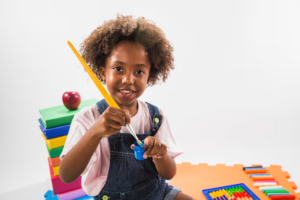As a creative child, I wish I had…

Growing up creative in a household of entrepreneurs meant I constantly explained what I was doing. To a child’s mind, it becomes tasking and disheartening to explain your passions. I understand poetry was new to my parents. However, maybe if they had paid attention, I would have enjoyed it more. Here is what my parents missed when raising me and what they are doing right with my younger siblings:
Listen and remember
Nurturing a creative child requires commitment. Ask them about their interests and why they are interested in them. Parents often dismiss their children’s dreams and goals as hobbies they will drop as they grow older. I stopped writing poetry in grade 5, but picked it up in form 2 and again on campus.
Do you hate having to explain yourself repeatedly? Imagine what your child feels every time they remind you what they do and how much they enjoy them. Your child’s interest in art may wither, but they will always remember how you viewed something they liked.
Recognize and dismantle your own biases
Back then we hardly ever saw poets (and other creatives) on our screens. Careers in the arts were unheard of. There is an old joke, that in an African household, you are either a doctor, engineer, lawyer, or nothing. A career as an artist is not always glamorous (mostly because there is little to no pay). It is normal to think of your child’s future but a little trust goes a long way. As an artist (poet), nothing compares to people, especially my parents, applauding or commenting on how beautiful my poem is, not even money.
Research
It is normal not to understand everything. However, a little understanding of what your child is doing goes a long way. The best place to start is at home. Here are some of the questions you can ask (tweak them to fit your child’s hobbies):
- Tell me more about your artwork
- How does it make you feel?
- What inspired you to make it?
- What materials did you use?
- What technique did you apply?
- Do you like it?
- What do you like the most about it?
- Are you proud of it?
When their teacher introduced beading to them, my brother was obsessed. He came home excited about the projects he would embark on. Knowing children, the beads would make a mess as soon as we left him unsupervised. So, what did we do? We allocated a container, a recycled, container for him to place all his beads and strings. Unless he is working on a project, we expect the beads to be in that container. He uses a plate to pick the beads. He has one specific plate- a plastic plate to prevent breakage. Once he is done, he is expected to clean the plate and place it where necessary.

Kids are naturally curious people. As mentioned, careers in art have not been invested in like those in engineering or mathematics. However, your child’s interest might change and the little creativity they love might steer their careers forward. For example, don’t we all love apps and websites that are easy to navigate? I assume a creative IT person was behind them.
For multi-talented children opt for activities that are pocket-friendly. For example, a child who draws and dances. Find dance or painting classes on YouTube. Not only is this free but also you get to monitor what they learn. You can then boost their confidence by; encouraging them to dance in church or parties and hanging their painting on walls.
Remember to make it easy for you and fun for them!







